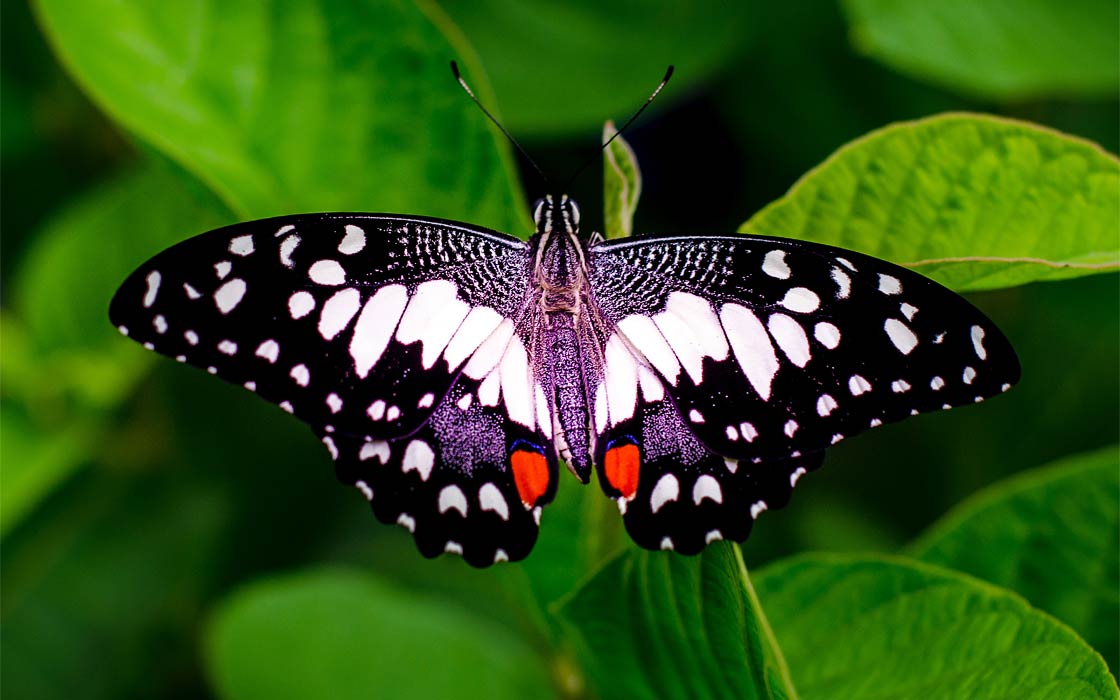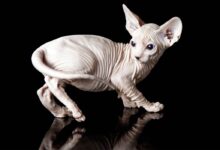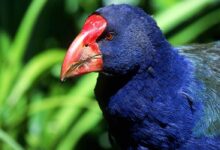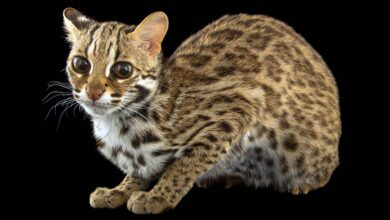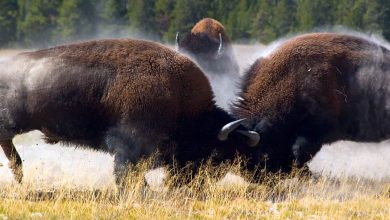How a butterfly wing can help in medicine and technology
The construction of a butterfly wing
There is no spring and summer without butterflies. They are embedded in the landscape of almost every corner of the earth. And although people have been observing them for a long time, we are still surprised by new discoveries related to the structure of their delicate body.
Butterfly portrait
Butterflies, or Lepidoptera, are the second most numerous group of insects after beetles. There are about 180,000 species of butterflies in the world. They are described in 126 families and 46 superfamilies. They make up 10% of the described species of living organisms.
The body of the butterfly consists of segments connected by membranous joints, which gives the insect freedom of movement. The individual parts – head, torso and abdomen – are protected by chitinous epidermis.
While there are butterfly species that can survive for several years, the average life span of butterflies is just a few weeks.
The diversity of species of these fragile creatures and the unusual structure of their wings give people ideas for using new technologies in medicine and technology.
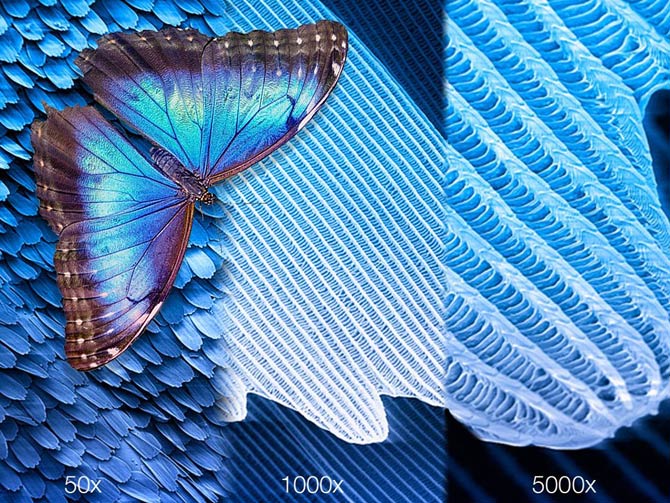
Unusual scales on the wings
Butterflies have two pairs of wings. Their size, shape and color vary depending on the species. They consist of a structure of lines with a two-layer membrane stretched between them.
The wings are covered with scales (hence the name Lepidoptera /from Ancient Greek lepís “scale” + ptera “wings”/ ) that are so small that they resemble pollen when touched. In fact, they are modified hair, each of which is formed from a single cell and is attached to the membrane by a delicate stalk.
The scales cover the wings in a tile-like fashion.
Some of them resemble slender flower petals, they may have a capillary, elliptical or wide-blade shape.
The hair inside has a space filled with pigment derived from metabolic products or food eaten by the caterpillar.
The colors of the scales vary depending on the factors from which they are formed (e.g. melanin gives black, brown, red-brown and dark yellow color; purine – present only in Pieris butterflies (the whites or garden whites) – white, orange and reddish; anthocyanin – red to purple; flavone – yellow; carotene – orange-yellow).
Another reason why butterfly wings are so varied in color is their structure. Many species of these insects have additionally specially shaped, concave scales, which make the incident light is not absorbed, but split or reflected. The effect of this phenomenon is the formation of cold structural colors (also known as physical or optical colors), producing a metallic sheen and a blue, green, violet or ultraviolet color.
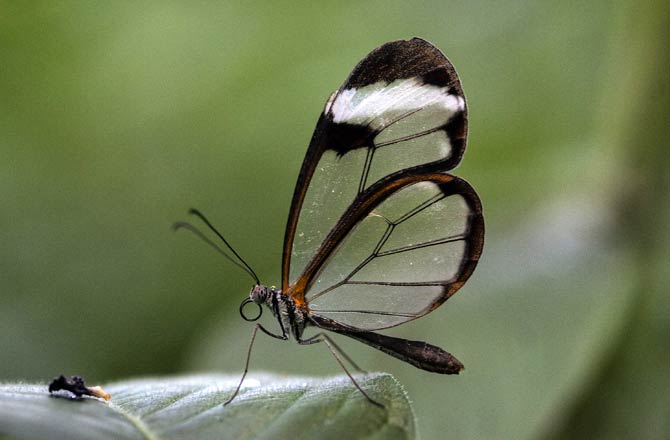
Resistant protective coatings
By observing the butterflies, scientists have noticed that their wings are always clean and dry. Using the example of the species Morpho didius (giant blue morpho), they found that this is due to the miniature, parallel grooves on the surface of the scales, which reduce the adhesion of foreign matter.
Thanks to this structure, water does not soak into the wings, but flows down them, washing away the impurities and, under the influence of gravity, is discharged with them to the outside.
Based on this aspect of the construction of butterfly wings, engineers try to create various medical devices, including contamination-resistant dressings.
Technicians are also designing self-cleaning cars with paintwork similar to a butterfly’s wing.
Similar technology is already used in the production of paints, glass and clothes.

Structural colors as a method of protection
Scientists were also interested in the structural colors of some butterflies. Using the example of the Papilio blumei species from the Swallowtail family, they tried to recreate a simplified version of the wings to obtain the effect of splitting and reflecting light.
All this, to be able to use this technology to better secure banknotes, credit cards and securities. Engineers say these safeguards will help protect against counterfeiting and forgery.
Unfortunately, although researchers spent ten years on this work, the project is still in the prototype phase as these complex technologies are still being developed.
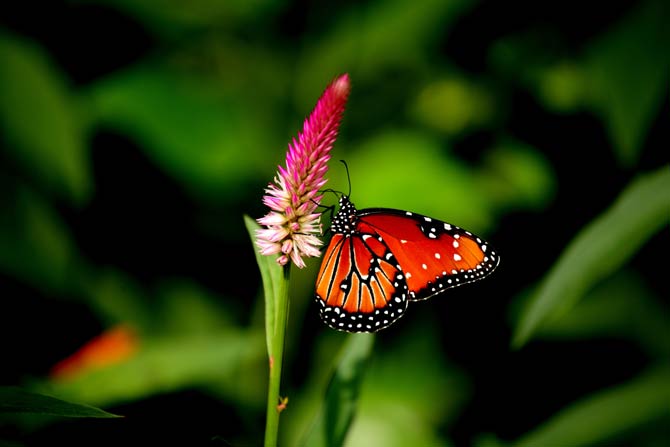
“Panel” heating, or why the butterfly spreads its wings
A watchful butterfly observer will notice that these insects often sit spreading their wings. Their behavior is not only due to fatigue after a long flight. In fact, their day begins with spreading their wings to warm up and recharge themselves with energy. Without it, the butterfly, chilled after a night, would not be able to move.
Some of the species, however, have another interesting property. Some of the black colored Swallowtails have rows of honeycomb holes in the scales, separated by corrugated inverted V-shaped slats. This allows light to pass through the holes more easily, which is absorbed and used to warm the body.
Scientists, observing the examples of absorbing solar energy flying in front of their eyes, decided to improve heating technologies.
They developed new solar panel structures and methods to use more sunlight and water to double the production of hydrogen – the green fuel of the future.
As you can see, butterfly sightings bring many ideas to improve human-made technologies.

Butterflies – interesting facts
- Some species of butterflies also have scent scales – androconial scales.
- Although the colors of the butterflies are delightful, they are not the main asset of males fighting for the favors of females. Researchers found that the choice of a potential mate is determined more by his technique of flight than by appearance.
- Butterflies mainly eat nectar, but they also like salt. In tropical regions, these insects have been observed to gently sip the tears from the eyes of huge caimans.
- Although they look delicate, butterflies are not easy prey for predators. Their uneven flight makes them difficult to grasp, and the terrible taste (caused by eating poisonous plants at the caterpillar stage) means that anyone who has tasted a butterfly once is unlikely to repeat it.

Recommended
- Ants – unusual insects
- Locust anti-collision system
- Fastest animals – Top 100
- Fastest animals – on land, in water and in the air
- Fastest mammals
- Fastest birds
- Most venomous snakes – Top 10
- Largest eagles – Top 10
- Largest birds of prey
- Smartest dogs – Top 10
- Animals records
- Largest crocodiles
- Longest whales
- Heaviest whales
- Longest snakes
- Most venomous snakes
- Largest sharks
- Top-flying birds

